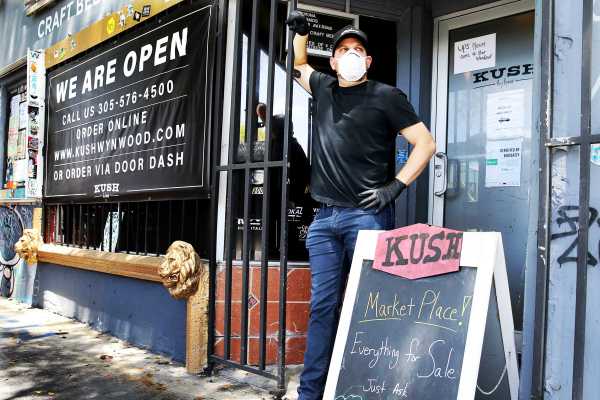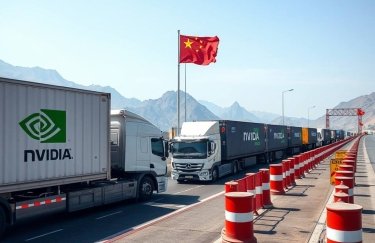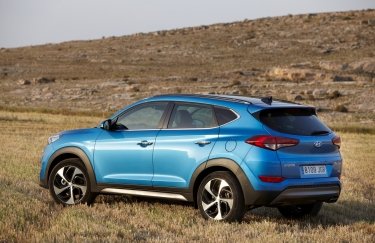
The PPP worked how it was supposed to. That’s the problem.
America’s plan to save small business in the pandemic was flawed from the start.
By
Emily Stewart
Jul 13, 2020, 8:00am EDT
Share this story
-
Share this on Facebook
-
Share this on Twitter
-
Share
All sharing options
Share
All sharing options for:
The PPP worked how it was supposed to. That’s the problem.
-
Reddit
-
Pocket
-
Flipboard
-
Email
This story is part of a group of stories called

Uncovering and explaining how our digital world is changing — and changing us.
Months after Congress created the Paycheck Protection Program (PPP) in an attempt to support small businesses during the Covid-19 pandemic, people are still confused, and even angry, over the ambitious, unprecedented experiment.
Take what happened with Mark Fisher Fitness (MFF), an LGBTQ-friendly boutique fitness studio based in New York. Because it got a PPP loan in April, it was able to rehire the 28 employees it laid off in March as the coronavirus crisis set in and its locations shuttered. But for the loan to be forgivable, MFF had to spend the money in two months, mostly on payroll.
“It did give us the ability to retain the whole staff for a period of eight weeks and keep that sense of community and of continuing our grand unicorn experiment to bring health and hotness to the masses,” said Andrew Cole, chief people officer at MFF.
But the reprieve the PPP loan offered didn’t last long. Even though MFF has pivoted to online classes for the foreseeable future, it’s once again had to lay off most of its staff and is closing one of its two locations permanently.
Still, compared to other small businesses that applied for PPP, it was lucky to get a loan at all. Many small business owners — particularly minority-owned businesses — say they were denied loans for even a few thousand dollars, while larger enterprises like the Los Angeles Lakers and Shake Shack were awarded millions in loans. (Facing public backlash, several of these larger businesses eventually returned the money.) Others say the loan amounts they received were too small to help at all. And a lack of transparency with the program has fueled misconceptions about what PPP was supposed to accomplish in the first place.
The controversy surrounding the PPP, which supports businesses with 500 employees or fewer, has a lot to do with a disconnect between the program’s design and how Americans think about business. The real goal of the PPP was to keep American workers on payroll, not to simply keep small businesses going. And so the majority of the money was disbursed to businesses with more employees, rather than to tiny ones with small staffs. That’s why a program widely perceived as being meant to boost the United States’ most vulnerable small businesses ended up prioritizing businesses that aren’t actually that small.
As the program nears a close — the last day for applications was extended from June 30 to August 8 — and it’s unclear whether there will be another round of loans, Recode examined the successes and failures of the PPP, as well as why the program ended up being so controversial.
The good, the bad, and the ugly of focusing on payrolls
In May, the progressive pollster Data for Progress conducted a poll on behalf of Recode in an effort to gauge public perception of the PPP and how Americans feel about it. It surveyed 1,235 likely voters online.
The poll revealed some dissonance in how Americans think about small business and who is and isn’t deserving of help. When asked whether all businesses should get help to keep workers paid, 70 percent of respondents said yes. But then when asked whether support should be capped at businesses with 500 employees, 76 percent said yes. And when asked about whether the Los Angeles Lakers NBA team, which got a loan and then returned it after public outcry, should have given the money back, 75 percent said it was the right thing to do.
When asked what the goal of federal assistance to businesses should be, 58 percent of respondents said it should be to keep workers paid, while 24 percent said it should be to keep businesses afloat — and that explains, at least partly, why the program has attracted controversy. It hasn’t been possible for many businesses to accomplish both of these goals at the same time, so they didn’t get what they needed to truly survive the pandemic, especially sole proprietorships or ones with just a few employees. Yes, covering paychecks is important. So is paying utilities and rent.
“The design was to help companies fund their payroll. One can step back and say, ‘gosh, is that the design we wanted to have?’” said Michael Minnis, an accounting professor at the University of Chicago Booth School of Business. “It wasn’t called the small business protection program or the microbusiness protection program. Companies in the 100 to 500 employee range have more payroll dollars than companies in the under 100 employees range. That’s just math.”
Related
Government loans meant to bail out small businesses could become a financial burden themselves
According to a June report from the Small Business Administration (SBA), the average PPP loan size is $107,000, and the administration claims the program has supported 51 million jobs and as much as 84 percent of all people employed by small businesses.
All of this adds some nuance to the controversies about big companies that got loans. If the point of the PPP loans is to keep people employed, then what does it matter how many total employees a loan-receiving company has?
Minnis pointed out that in criticizing bigger companies for getting loans, it’s important to recognize the counterfactual. What if, after the Lakers returned the money, they immediately laid off all their concession workers? (This hasn’t actually happened.) Or take the case of car retailer AutoNation. The company furloughed 7,000 workers in early April. It applied to the program and received a $77 million loan, which it said it would use to rehire those workers. But amid controversy, it wound up returning the loan.
The focus on payrolls has caused other wrinkles as well.
At the outset of the program, businesses had to spend 75 percent of loans on payroll within eight weeks in order for it to be forgivable. Amid feedback from the business community that they have other expenses and that the crisis is lasting more than eight weeks, Congress changed the parameters of the loans in mid-June to require 60 percent be spent on payroll over a period of 24 weeks.
But for many businesses, it was too little, too late. “The problem is these businesses are in week six or seven of their loan, so they’ve already used 80 percent of the money that was available, and they were paying people who weren’t working for them,” said Daniel Rafeedie, CEO of payroll company PaySteady.
That’s what happened with Mark Fisher Fitness. “I’m extremely happy for other small businesses that have the ability to let that money last longer, but it did sting a little bit,” Cole said.
And just because a business got a loan doesn’t mean it was enough, even to cover its payroll. Emilie Aries, the founder of Denver-based training services company Bossed Up, had only her salary on her 2019 payroll, which was used to calculate her PPP loan amount. It didn’t take into consideration the two new employees she’d hired this year, so she only got $9,000. “I feel like we fell through a loophole,” she said. “I hired my employees on January 1 and March 1, and the whole point of this program is to protect employees, right? It did not do that for me.”
She wound up taking a 50 percent pay cut and using her existing line of credit with the bank to take out another loan to stay afloat. “We were able to pivot successfully,” she said, “but I still have $15,000 in debt I wouldn’t have.”
For some businesses, even if PPP only offered a small loan, it still helped keep their businesses going. Caleb Benoit, who runs Connect Roasters, a small coffee company in Illinois, had a relatively easy time getting a PPP loan from his small local bank. He only got $2,500, and while that doesn’t make a huge difference in his ability to stay afloat, he considers it a helpful boost while he rejiggered his business. “The truth is, we’re okay financially; we’re going to make it,” he said. “We’re still small and pretty lean, we don’t have a lot of overhead, so we’re better suited to weather the storm.”
The problem with sticking to market-based solutions is that the market is kind of broken
The PPP was designed to work within the current US economic system — one that is already imbalanced and stacks the odds against smaller competitors and minorities. And so the PPP has replicated those same flaws.
KB Brown runs Wolfpack Promotionals, one of only two Black-owned printing shops in Minnesota. He estimates business has dropped by more than 90 percent since the onset of the pandemic, and he’s had to lay off all of his employees, so now only he and his wife are running the Minneapolis-based business. The only requests they’re getting are George Floyd-related shirts, but he feels strange about commercializing someone else’s pain and prefers not to do them. “We don’t do the profiting off of other people’s misery and death thing,” he said.
Brown has been trying for months to get an $8,000 PPP loan, first applying through Wells Fargo and then with Square. He hasn’t had any luck. “It’s bullshit,” he said. “I don’t think the loans are exactly designed for minorities.”
His assessment isn’t wrong: The majority of small businesses owned by people of color have been shut out of the loans altogether, and some of those who received them got less than they asked for. This is especially concerning because four out of every 10 Black-owned small businesses in the US aren’t expected to survive the current crisis. The pandemic has already hit Black and brown communities in the US the hardest, in terms of both health and financial impacts.
“This is a program that relies on financial institutions as intermediaries,” said Ashley Harrington, federal advocacy director at the Center for Responsible Lending. “That poses a problem for business owners of color, given the history of financial exclusion by the financial mainstream in this country.”
People of color have, throughout America’s history, been shut out of financial systems and put at an economic disadvantage — which means the PPP’s design renders this outcome almost inevitable.
“This is a program that relies on financial institutions as intermediaries. That poses a problem for business owners of color, given the history of financial exclusion by the financial mainstream in this country”
Many banks approving PPP loans accepted applications only from existing customers as a default. That left out many minority-owned businesses, which often have weak relationships with banks as a result of years of systemic exclusion.
Moreover, because banks can collect bigger fees for bigger loans, that further incentivized bigger businesses to be prioritized over smaller ones. And the processes for getting the loan and for having it forgiven are complicated. Sole proprietorships (businesses owned and run by one person), independent contractors, and tiny businesses with just a handful of employees are low on resources to begin with. They don’t have a team of accountants and human resources personnel to help them navigate the paperwork.
“Reflexively, we rely on market mechanisms to solve problems,” said Felicia Wong, president and CEO of progressive think tank the Roosevelt Institute, in an interview earlier this year about PPP. “We chose this way to do this that is market-driven and market-mediated, and it’s hugely problematic.”
The government could have set up a system to give money directly to workers or to businesses. Instead, it put financial institutions in the mix, and they brought with them the flaws and biases of the private market.
The $500 billion question that might never be fully answered
Beyond the controversies about who did and didn’t get loans and how the program was implemented, there’s another problem with it: a lack of transparency. A total of $521 billion in loans was given out through the PPP, and we might never know where all the money ended up.
The federal government initially resisted calls for more transparency into who’s receiving PPP loans, saying that the information is “proprietary” and “confidential.” After intense public pressure, the government relented and released information in July on nearly 700,000 PPP loans of $150,000 or higher. Among the recipients: businesses connected to President Donald Trump’s son-in-law, Jared Kushner, and Kanye West’s fashion brand, Yeezy.
“Reflexively, we rely on market mechanisms to solve problems. We chose this way to do this that is market-driven and market-mediated, and it’s hugely problematic”
As the Washington Post notes, the data release is just 15 percent of all of the loans issued and leaves out the majority of sole proprietorships and independent contractors. And the
Sourse: vox.com





